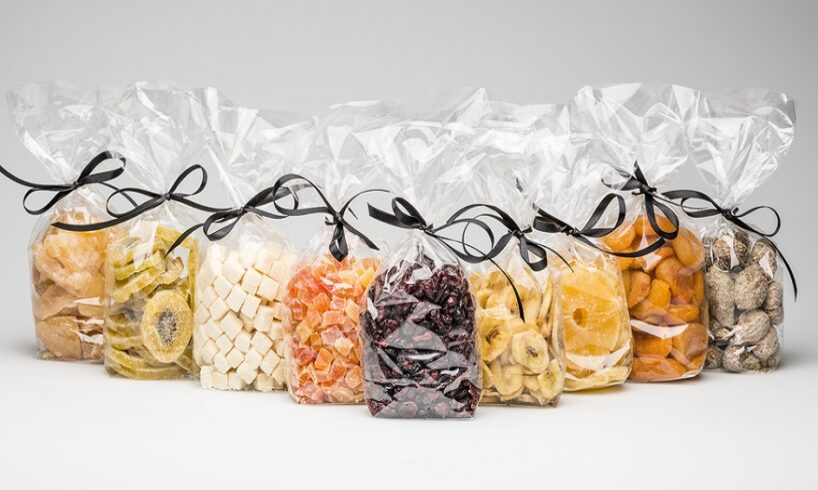
In today’s environment-minded society, adopting sustainable practices across every aspect of our lives has never been more essential. Food packaging in UAE needs immediate consideration with plastics polluting our planet at an alarming rate; yet eco-friendly food packaging offers hope – providing both eco-friendliness and individual well-being advantages simultaneously. In this article, we’ll examine its significance as an environmental solution and the positive results it can have for both ourselves and the earth’s inhabitants alike.
The Problem With Conventional Packaging
Conventional food packaging by food packaging companies in uae has become one of the major contributors to environmental degradation. From plastic containers and Styrofoam trays, to foam boxes containing non-biodegradable material that takes hundreds of years to break down into dust particles and ocean pollution; its manufacturing also consumes precious resources while producing greenhouse gases into our atmosphere.
Eco-Friendly Packaging as an Ecological Alternative
Eco-friendly food packaging offers an eco-friendly alternative to standard packaging solutions, focusing on waste reduction and environmental sustainability. Eco-friendly packaging typically utilizes renewable resources or recycled materials with designs tailored for easy biodegradability or compostability; when we choose eco-friendly alternatives we reduce landfill, ocean, and incinerator disposal by up to 79%!
Reducing Plastic Pollution
Eco-friendly food packaging offers multiple advantages that help combat plastic pollution, such as using biodegradable or compostable materials instead of plastic to address its harmful impacts on marine life and ecosystems. Eco-friendly packaging breaks down naturally over time reducing microplastic pollution from entering our waterways or food chain.Cake box supplier in dubai also uses eco friendly packaging.
Preserving Resources
Selecting eco-friendly food packaging helps preserve our planet’s resources. Traditional packaging relies heavily on fossil fuels for production, exacerbating climate change. By choosing more sustainable packaging such as plant-based materials or recycled paper or plastic made of cornstarch or sugarcane instead, we can reduce environmental impacts while working toward creating a more sustainable future.
Energy Efficiency
Eco-friendly packaging solutions also promote greater energy efficiency during their entire lifecycle, from production through recycling or composting of non-biodegradable containers – helping us lower greenhouse gas emissions as they go through manufacturing. In comparison, eco-friendly materials typically involve lower manufacturing energy requirements. Furthermore, recycling or composting these eco-friendly materials consumes less energy compared to non-biodegradable ones when being disposed off reducing our carbon footprint considerably.
Consumer Demand and Brand Reputation
Eco-friendly food packaging has become more in-demand as consumers become increasingly environmentally aware, leading them to actively seek businesses that align with their values. By adopting eco-friendly packaging food companies can draw new customers in while simultaneously showing commitment to sustainability by expanding customer bases that prioritize eco-conscious choices – eco-friendly packaging can even function as an effective marketing tool aimed at reaching them more directly.
Conventional Packaging
Conventional food packaging creates numerous problems beyond environmental degradation. Many conventional materials containing harmful chemicals like bisphenol A (BPA) have the potential of leeching into food and beverages and posing serious health hazards to both people and wildlife alike, including digestive difficulties or even death for animals that mistake plastic packaging for food. The negative repercussions from conventional packaging extend far beyond environmental considerations alone.
Eco-Friendly Packaging as an Effective Approach
Eco-friendly food packaging offers a viable and sustainable alternative to conventional packaging that addresses its shortcomings. By choosing eco-friendly materials such as bioplastics, recycled paper or plant fibers for our packaging needs we can produce safe biodegradable options which don’t release hazardous chemicals into the environment, making eco-friendly options responsible choices when it comes to protecting both humans and wildlife alike.
Facilitating a Circular Economy
Eco-friendly food packaging fits within the principles of circular economy models, which aim to minimize waste while encouraging resource conservation through recycling and reuse. Such materials can easily be recycled or composted allowing them to become new packaging or be returned back into soil as nutrient-rich compost for plant food sources. By opting for eco-friendly packaging we support circular economy development by decreasing our dependence on virgin materials while simultaneously decreasing waste generation.
Protecting Biodiversity and Ecosystems
Eco-friendly food packaging plays a pivotal role in protecting biodiversity and ecosystems. Plastic harms wildlife through pollution and habitat destruction; eco-friendly alternatives provide relief. Biodegradable packaging materials break down naturally over time reducing risks that animals mistake them as food while at the same time protecting marine life and terrestrial creatures from potential harmed caused by plastic packaging materials that pose no danger. By switching over to eco-friendly alternatives we actively contribute towards protecting fragile ecosystems as well as biodiversity preservation!
Engaging Consumers
Eco-friendly food packaging offers companies another powerful means of engaging and empowering their target consumers. As more individuals become environmentally aware, they actively search out businesses who align with their values; by adopting eco-friendly packaging food companies can attract a growing customer base while improving brand reputation by representing sustainability commitment visibly while inspiring more environmentally responsible lifestyle choices among their target population.
Eco-friendly food packaging is not simply a fad; it is an integral component of safeguarding our planet for future generations. By reducing waste, curbing plastic pollution, supporting circular economies and protecting biodiversity and ecosystems – eco-friendly packaging provides a sustainable solution that benefits both businesses and the planet alike. Now is the time for companies and individuals to embrace eco-friendly packaging as an avenue towards decreasing ecological footprint and building healthier planets!
Conclusion:
Eco-friendly food packaging is more than a trendy concept; it is essential for the future generations. By cutting waste, curbing plastic pollution, conserving resources and improving energy efficiency, eco-friendly packaging offers a sustainable solution that benefits both businesses and the planet alike. Now is the time for food companies and consumers alike to embrace eco-friendly packaging as an efficient means of decreasing ecological impact while creating a greener world.
